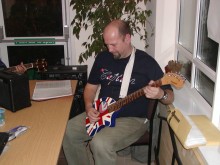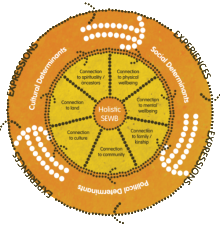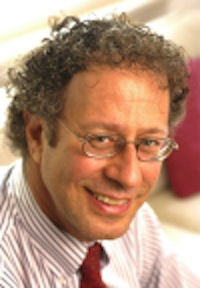A qualitative research project involving clients of the structured day care programme at BAC O’Connor provided insights into the positive effects of the programme, as well as the factors that contributed to these beneficial effects. (2,302 words) *
My Journey: 2. Learning About Addiction Treatment – My WGCADA Experience, Part 1
I used to visit West Glamorgan Council on Alcohol and Drug Abuse (WGCADA) in Swansea in order to learn about addiction, recovery and treatment from treatment practitioners, and from people who have accessed the treatment service for help with their substance use problem. (1,306 words)
Last week, I posted the first part of a serialisation of My Journey, my wide-ranging career in the field of addiction, mental health and trauma. This first part focused on my career in neuroscience, which lasted almost 20 years. In 2000, I closed my laboratory, as I did not think that neuroscience research was helping people overcome addiction.
Given that I did not feel that a biomedical approach and the use of drugs were the answer to helping people overcome drug addiction, what were the answers? And what methods were used in treatment services that were successful in helping people overcome substance use problems?
Learning From the Experts, Part 2
 This post continues the research relating to client views on treatment and recovery that Gemma Salter, Sarah Davies and I conducted at BAC O’Connor treatment service back in 2004.
This post continues the research relating to client views on treatment and recovery that Gemma Salter, Sarah Davies and I conducted at BAC O’Connor treatment service back in 2004.
A further factor reported to be influential in producing positive effects was the adoption of a holistic approach, whereby the ‘whole package’ of the person was addressed in treatment, and not simply the substance use problem. The range of targets included behaviours, coping methods, physical and psychological emotional problems, practical problems, social and relationship difficulties, and self-awareness.
Factors Facilitating Recovery: (Gaining) Recovery Capital
 Here’s the last of the 11 factors facilitating recovery that I wrote about in my book Our Recovery Stories: Journeys from Drug and Alcohol Addiction. Just because it is last, does not mean it is the least important factor. In fact, it is one of the most important!
Here’s the last of the 11 factors facilitating recovery that I wrote about in my book Our Recovery Stories: Journeys from Drug and Alcohol Addiction. Just because it is last, does not mean it is the least important factor. In fact, it is one of the most important!
Recovery is better predicted by someone’s assets and strengths, rather than their ‘pathologies’, deficits and weaknesses. People can make progress by identifying and building on their personal assets and strengths. Interventions to facilitate recovery must focus on helping individuals build their recovery strengths, more often referred to as ‘recovery capital’.
Recovery capital is the quantity and quality of internal and external resources that one can bring to bear on the initiation and maintenance of recovery [1]. It takes three main forms:
Addiction Recovery
 Here is a section about the nature of addiction recovery from my new eBook, Our Recovery Stories: Journeys from Drug and Alcohol Addiction.
Here is a section about the nature of addiction recovery from my new eBook, Our Recovery Stories: Journeys from Drug and Alcohol Addiction.
“There have been various definitions of recovery proposed over the years. For the purpose of this chapter, I am going to use a definition proposed by leading addiction recovery advocate William (Bill) L White [1]:
‘Recovery is the experience (a process and a sustained status) through which individuals, families, and communities impacted by severe alcohol and other drug (AOD) problems utilize internal and external resources to voluntarily resolve these problems, heal the wounds inflicted by AOD-related problems, actively manage their continued vulnerability to such problems, and develop a healthy, productive, and meaningful life.’
‘A Day With Dave’ by Annalie Clark
 In my last post, I talked about Dave Watkins and his past role at the treatment agency West Glamorgan Council on Alcohol and Drug Abuse (WGCADA) in Swansea. Here’s an article that my oldest daughter Annalie wrote in 2005, after spending a day with Dave Watkins. Annalie had just finished her first year of medical training at the University of Edinburgh. She is now a psychiatrist.
In my last post, I talked about Dave Watkins and his past role at the treatment agency West Glamorgan Council on Alcohol and Drug Abuse (WGCADA) in Swansea. Here’s an article that my oldest daughter Annalie wrote in 2005, after spending a day with Dave Watkins. Annalie had just finished her first year of medical training at the University of Edinburgh. She is now a psychiatrist.
What is striking about this article is that Dave’s role resembles what I envisage a recovery support worker (or recovery coach) would be doing today. Annalie highlights Dave’s extensive contacts within, and knowledge of, the local community, which helps the lives of the people with whom he works. In the video below, you can see one of the magic tricks that Dave used to engage the people with whom he was working.
Learning About Addiction Treatment, Part 3
 I continue describing my experiences at the local treatment agency West Glamorgan Council on Alcohol and Drug Abuse (WGCADA) and what I learnt about how treatment facilitates recovery from addiction. You can read the earlier parts here and here.
I continue describing my experiences at the local treatment agency West Glamorgan Council on Alcohol and Drug Abuse (WGCADA) and what I learnt about how treatment facilitates recovery from addiction. You can read the earlier parts here and here.
‘Dave Watkins was a Community Support Worker for WGCADA. He was originally an engineer, but changed career after a member of his family suffered a substance use problem. In simple terms, Dave helped clients with every aspect of their lives that could interfere with their progress on their recovery journey. This included helping put a roof over their heads, getting their social security benefits, dealing with legal problems… and sometimes involved painting walls or cleaning up vomit! Dave immersed himself in his clients’ lives. He worked with some of the most chaotic substance users you would ever meet.
Learning About Addiction Treatment, Part 2
 In this post, I continue the description of what I learnt about addiction treatment by talking with practitioners at a local treatment agency in Swansea, West Glamorgan Council on Alcohol and Drug Abuse (WGCADA). You can read my previous post here.
In this post, I continue the description of what I learnt about addiction treatment by talking with practitioners at a local treatment agency in Swansea, West Glamorgan Council on Alcohol and Drug Abuse (WGCADA). You can read my previous post here.
The Primary Treatment programme at WGCADA used key principles of AA and the 12-Step Minnesota model. It was based on the disease concept and on the belief that the illness of addiction is physical, mental and spiritual. A holistic approach was used to help the person recover from addiction, and clients underwent considerable self-examination during the treatment process. Clients could not be drinking or using illegal drugs when they entered the Primary Treatment programme.
Brain Chemicals to Human Connection, Part 2
 In an earlier blog, I described how I spent nearly 25 years working as a neuroscientist in academia. In 2000, I made the decision to close my neuroscience laboratory and focus on working in the addiction field with humans (rather than laboratory rats). I set up an initiative called WIRED (later to become Wired In) and a charity Wired International Ltd. I continued by job as a Professor of Psychology, but when I wasn’t teaching I was engaged in a range of activities in the addiction field. The following section is taken from the last chapter of my new eBook Our Recovery Stories: Journeys from Drug and Alcohol Addiction.
In an earlier blog, I described how I spent nearly 25 years working as a neuroscientist in academia. In 2000, I made the decision to close my neuroscience laboratory and focus on working in the addiction field with humans (rather than laboratory rats). I set up an initiative called WIRED (later to become Wired In) and a charity Wired International Ltd. I continued by job as a Professor of Psychology, but when I wasn’t teaching I was engaged in a range of activities in the addiction field. The following section is taken from the last chapter of my new eBook Our Recovery Stories: Journeys from Drug and Alcohol Addiction.
‘A Day With Dave’ by Annalie Clark
I posted this originally in July 2013, a day before lovely daughter Annalie headed back to the UK tomorrow, having spent a year here in Perth working as a doctor (along with her boyfriend Max) in the emergency department of a local hospital. Over seven years later, Annalie is a psychiatrist working in the UK.
Here’s an article that Annalie wrote in the summer of 2005, when she had just finished her first year of medical training at the University of Edinburgh. It appeared in a June edition of Drink and Drugs News. The article is about Dave Watkins who used to be a top-class support worker at a treatment centre in Swansea.
Understanding Indigenous Wellbeing
 “Indigenous people have a holistic view of health and wellbeing that incorporates the physical, spiritual, mental, emotional, scial and environmental. It does not just focus on the individual, but also on the health and wellbeing of the community.”
“Indigenous people have a holistic view of health and wellbeing that incorporates the physical, spiritual, mental, emotional, scial and environmental. It does not just focus on the individual, but also on the health and wellbeing of the community.”
Indigenous Heath and Wellbeing
To appreciate the many ways that society can facilitate the healing of Indigenous people, we must understand the Indigenous view of health and wellbeing. It is different to that of western culture.
Indigenous people have a holistic view of health and wellbeing that incorporates the physical, spiritual, mental, emotional, social and environmental. It does not just focus on the individual, but also on the health and wellbeing of the community.
This view, which has been in existence for tens of thousands of years, is far richer than the western concept of mental health, which comes from an illness or clinical perspective.
20 Ways To Facilitate Indigenous Healing, Part 2
 6. The Healing Ritual of Storytelling
6. The Healing Ritual of Storytelling
Storytelling is a healing ritual amongst Indigenous people.
In a culturally safe environment (e.g. healing circle), Indigenous people can share experiences by telling their Story (which is often a trauma Story), help each other come to terms with the emotional pain caused by what has happened to them in their past, and make sense of their personal story in relationship to the collective, communal Story.
7. Pride in Surviving Colonisation
Learning history from an Indigenous perspective, illustrating how conditions for social and psychological discontent have developed, helps Indigenous people understand why they have problems.
It also shows them that they retain the necessary agency to change their lives for the better. It helps them deal with shame and blame, factors that impact negatively on social and emotional wellbeing.
‘Setting the Intention to Heal: The Starting Point of Mental Health Recovery’ by Douglas Bloch
 Here is such an important blog about healing and recovery. Thank you, Douglas.
Here is such an important blog about healing and recovery. Thank you, Douglas.
‘“The readiness is all.” William Shakespeare
In my work facilitating depression support groups, I have discovered three essential factors to healing from depression, which I call ”the three pillars of mental health recovery.” In my earlier blogs for Mad in America I wrote about two of these pillars – connecting with community and using a holistic approach to treat symptoms. Now I would like to present the first and MOST IMPORTANT pillar – Setting the Intention to Heal.
I define setting the intention to heal as “making the decision that you want to get well, even if you don’t know how.” Setting the intention to heal does not require that a person know the exact path that will heal him from a major depression or other mental health disorder. It just requires that he or she wants be well.
Sharing Culture
 Please check out my new website, Sharing Culture, which focuses on Aboriginal healing. Here is what we say on our home page:
Please check out my new website, Sharing Culture, which focuses on Aboriginal healing. Here is what we say on our home page:
What is Sharing Culture?
Sharing Culture is a unique initiative to empower Aboriginal people to heal and develop resilience to historical trauma and its consequences. These consequences include poor physical health, mental health problems, drug and alcohol addiction, violence, abuse and suicide.
Sharing Culture is based on the core values of authenticity, connection, courage, creativity, empathy and forgiveness.
“Creating Connections through Dialogue” conference
‘We live in an increasingly interdependent and interconnected world. The Creating Connections conference was an opportunity to explore various aspects of connectedness and the implications for recovery.
Health and mental health providers, people with the lived experience of mental health challenges and recovery, family members and others were invited to participate in workshops and joined in facilitated dialogue sessions to connect and learn from one another to become more effective in our lives and in our work.’






